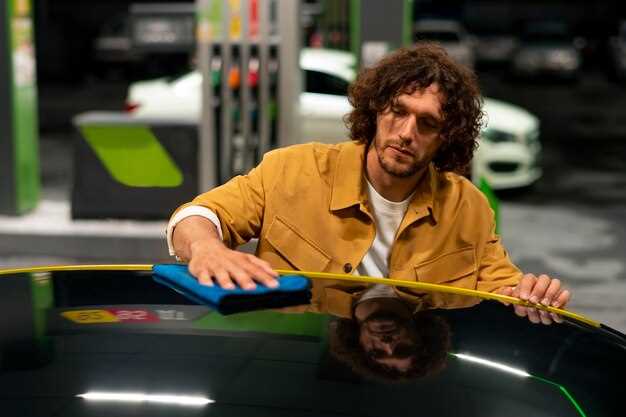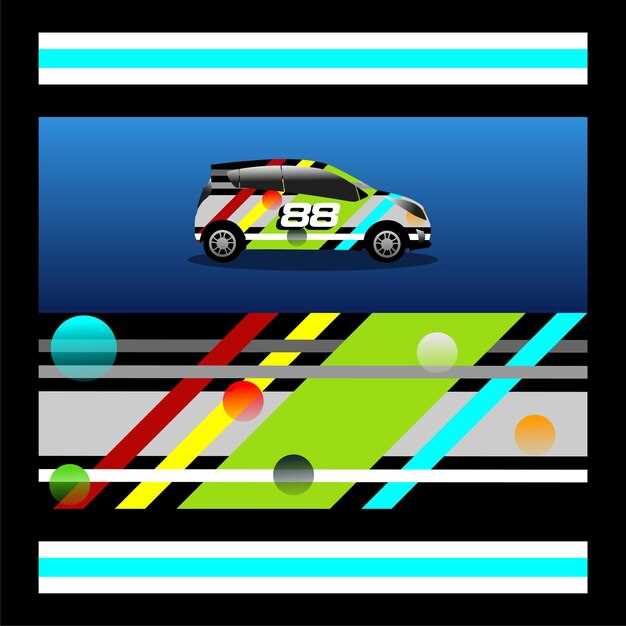
When it comes to enhancing the visual appeal of sports cars, custom graphics and decals play a pivotal role. These elements not only contribute to the overall aesthetic but also reflect the personality and style of the car owner. With the right graphics, any ordinary vehicle can transform into a head-turning masterpiece.
Choosing the right decals is essential for achieving a cohesive look. It’s important to consider the color scheme and design of the car before applying any graphics. Bold, vibrant colors can help highlight the car’s sleek lines, while more subdued tones may provide an elegant touch. Always ensure that the decals complement the existing paintwork, as mismatched designs can detract from the overall effect.
Additionally, the placement of graphics is crucial. Strategically placing decals on key areas like the hood, sides, and rear can accentuate the car’s features and create a dynamic visual impact. Experimenting with size and orientation can also yield interesting results, allowing for a custom look that stands out from the crowd.
Finally, for a polished finish, it’s essential to use high-quality materials. Opt for vinyl decals that are designed to withstand various weather conditions and retain their vibrancy over time. Proper application techniques will ensure longevity and minimize the chances of peeling or fading, allowing your custom graphics to shine brilliantly for years to come.
Selecting the Right Material for Car Decals

When creating custom graphics and decals for sports cars, selecting the appropriate material is crucial for achieving the desired aesthetic and durability. Here are some key considerations to guide your decision:
- Vinyl: A popular choice for car decals due to its versatility and durability. Vinyl is weather-resistant and can withstand harsh UV rays, making it suitable for outdoor use.
- Oracal 651: This type of vinyl is known for its excellent adhesive properties and longevity. It is ideal for both indoor and outdoor applications and is often used for custom lettering and graphics.
- Cast vs. Calendared Vinyl: Cast vinyl is thinner and more flexible, making it ideal for complex curves and contours on sports cars. Calendared vinyl, while more affordable, is thicker and best suited for flat surfaces.
- Polyester-based films: These materials offer high durability and resistance to fading and tearing. They are often used for premium decals that require a glossy finish.
- Clear vs. Opaque: Clear materials provide a transparent finish, allowing for intricate designs that can overlay on different car paint colors. Opaque materials, on the other hand, offer solid, vivid colors that can stand out boldly against the car’s surface.
In summary, the right material for car decals greatly impacts the overall look and lifespan of the graphics. Opt for high-quality vinyl or premium polyester options to ensure your custom designs not only look fantastic but also endure the elements.
Designing Eye-Catching Custom Graphics
When creating custom graphics for sports cars, the goal is to capture attention while reflecting the personality of the vehicle and its owner. A well-designed graphic can enhance the car’s aesthetic and make it stand out on the road.
First, consider the overall theme and style you want to convey through your decals. Whether it’s aggressive, sleek, or playful, the theme should guide your color choices, shapes, and positioning. Bold colors typically attract more attention but must be balanced with the car’s existing paint job to avoid clash.
Next, focus on the design elements. Geometric shapes, stripes, and organic curves can all work well in creating visual interest. Use contrast effectively by combining light and dark colors to draw the eye. Textures can also add depth; incorporating metallic or matte finishes can elevate the custom graphics.
It’s essential to select high-quality materials for your decals. Durable vinyl not only withstands different weather conditions but also maintains vibrant colors over time. Consider the longevity of your design, especially if you plan on participating in car shows or rallies.
Finally, test your designs on a smaller scale before applying them to the entire car. This allows for adjustments and ensures that the final look meets your expectations. Collaborate with a professional designer if possible, as their expertise can lead to a truly unique and eye-catching final product.
Application Techniques for Long-Lasting Decals

Applying custom graphics and decals effectively is crucial to ensuring their durability and visual appeal on sports cars. To start, prepare the vehicle’s surface by cleaning it thoroughly. Use a mild detergent solution to remove dirt, wax, and grease, followed by a lint-free cloth to ensure there are no residues left behind. This creates a smooth, adherent base for the decals.
Next, measure and mark the area where the decals will be applied. Use masking tape to outline the position. This step is essential for achieving the perfect alignment and ensuring a professional look. When you are ready to place the decals, peel them slowly and carefully from the backing material, avoiding any creasing or tearing.
Utilize the “wet application” method for larger decals. Mist the adhesive side of the decal and the surface of the car lightly with a solution of water and a few drops of dish soap. This allows for repositioning before the decal adheres completely. Use a squeegee or a credit card to push out any air bubbles and excess water, starting from the center and moving outward.
For long-lasting graphics, consider applying a heat source like a heat gun or a hairdryer at a low setting after the decal is in place. This can help the adhesive bond more effectively to the surface, especially on curved areas. Ensure not to overheat the decal, as this can cause damage.
After the application, allow the decals to cure. Avoid washing or exposing the vehicle to harsh conditions for at least 48 hours. This period is critical for the adhesive to set properly, ensuring that the custom graphics will remain intact for an extended time. Regular maintenance, including gentle washing and the use of waxes formulated for wrap materials, can further enhance their longevity.



